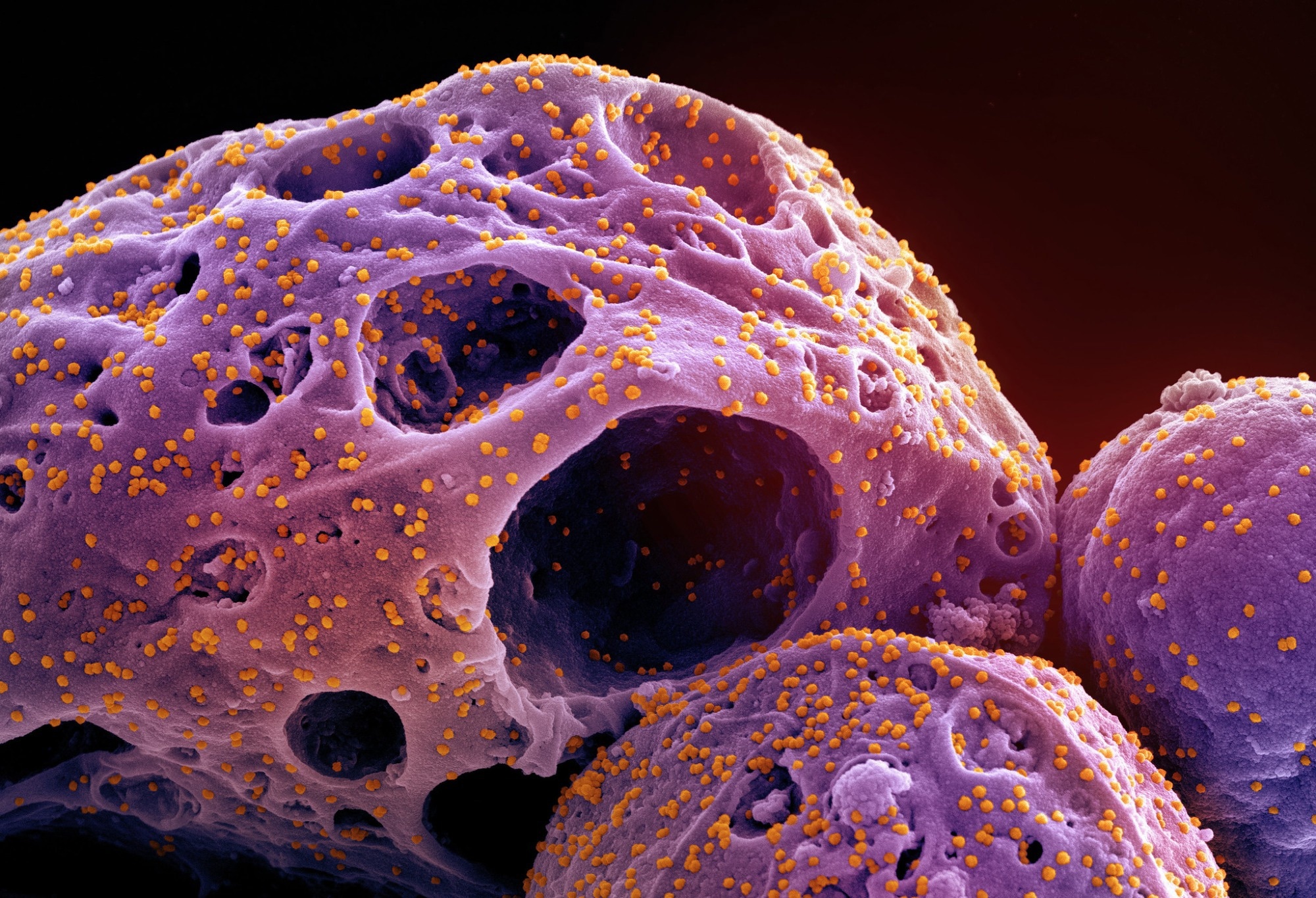In a recent study posted to the bioRxiv* server, researchers at the University of Arizona screened ~11 million severe acute respiratory syndrome coronavirus 2 (SARS-CoV-2) main protease (MPro)-inhibiting small compounds in the ZINC15 database using a structure-based in-silico screening method.
 Study: Novel inhibitors against COVID-19 main protease suppressed viral infection. Image Credit: NIAID
Study: Novel inhibitors against COVID-19 main protease suppressed viral infection. Image Credit: NIAID

 *Important notice: bioRxiv publishes preliminary scientific reports that are not peer-reviewed and, therefore, should not be regarded as conclusive, guide clinical practice/health-related behavior, or treated as established information.
*Important notice: bioRxiv publishes preliminary scientific reports that are not peer-reviewed and, therefore, should not be regarded as conclusive, guide clinical practice/health-related behavior, or treated as established information.
Background
More antiviral compounds that limit SARS-CoV-2 replication and reduce coronavirus disease 2019 (COVID-19) severity are still urgently needed amid the continual emergence of its new variants of concern (VOC), such as Omicron, which is highly contagious and escape vaccine-derived immune surveillance. Also, significant infection risk remains high among unvaccinated, immunocompromised, and otherwise vulnerable individuals.
Of all non-structural proteins (NSPs), SARS-CoV-2 MPro is crucial for processing polypeptides pp1a and pp1ab encoded by the open reading frame 1 (ORF1) and ORF1b into functional proteins, including the RNA dependent-RNA polymerase (RdRP). Without prior proteolytic cleavage by MPro, RdRp activity, crucial for SARS-CoV-2 replication, is severely impaired.
Studies have implicated Mpro with the induction of cellular type I and type III interferon (IFN) and proinflammatory cytokine responses, either directly or indirectly. Thus, pharmacological inhibition of MPro might limit viral replication by inducing a type I and type III IFN-dependent antiviral state in the host cells. Furthermore, its structural conservation across all human SARS coronaviruses, with only three mutations outside its known binding pocket, makes MPro an attractive target for antiviral inhibition by drugs. Paxlovid, a derivative of the MPro inhibitor GC376, is an approved COVID-19 drug.
About the study
In the present study, researchers identified nine lead compounds from the ZINC15 database, which they prioritized for validation using SARS-CoV-2 replication assays. They performed these assays in rhesus monkey kidney-derived Vero cells and human lung-derived Calu-3 cells. The team obtained the X-ray crystal structure of MPro from the Research Collaboratory for Structural Bioinformatics (RCSB) Protein Data Bank (PDB). They defined the binding pockets of MPro based on the reported inhibitor X77. Virtual screening with Schrödinger yielded top-500 lead compounds, which, in turn, fetched nine lead compounds for in vitro testing.
The researchers infected Vero cells with SARS-CoV-2 immediately after the addition of increasing concentrations of the lead compounds. After four days, they measured the number of infected cells by viral reduction plaque assay. Cells infected in the absence of the lead compounds served as a positive control, whereas uninfected cells cultured in the presence of increasing concentrations of the lead compounds served as a control for cytotoxicity.
In this way, the team measured the cytopathic effect (CPE) on Vero cells four days after SARS-CoV-2 infection inoculated with increasing concentrations of 0.001 to 100 µM of the three compounds gradually. Simultaneously, they determined the cytotoxicity of these compounds across all doses.
Study findings and conclusion
The researchers identified nine lead compounds that showed hydrogen bonding interactions and other potential hydrophobic or hydrophilic interactions with SARS-CoV-2 MPro and bound to the same binding site. Of these, three compounds, i.e., PATH-6, PATH-7, and PATH-8, could significantly suppress the replication of SARS-CoV-2 by interfering with MPro activity. In addition, they showed a significant decrease in the number of infected cells compared to the positive control. PATH-6, PATH-7, and PATH-8 inhibited virus-induced CPE with a half maximal effective concentration (EC50) between 1.57 – 9.3 µM. PATH-6 showed no sign of cytotoxicity, and PATH-7 showed no sign of cytotoxicity within 10 µM.
The hydrogen bond, van der Waals, hydrophobic and Pi-Pi interactions between these three validated compounds and SARS-CoV-2 MPro mainly occurred at the catalytic pocket with strong bonding to histidine (His)41 and cysteine (Cys)145, indicating these residues may be particularly involved in inhibiting SARS-CoV-2 MPro. Overall, these experiments confirmed that three out of the total nine lead compounds significantly suppressed SARS-CoV-2 infection in vitro, and especially PATH-6 is a promising compound for further optimization and could be added to the existing reservoir of the COVID-19 MPro inhibitors for future drug development against SARS-CoV-2 and related coronaviruses.
Further, the study analyses showed that leucine (Leu)141, asparagine (Asn)142, glycine (Gly)143, glutamic acid (Glu)166, and glutamine(Gln)189 amino acid residues stabilized the MPro‐ligand complex. The team built three MPro structures with K90R mutation and validated all these compounds by docking them to these three MPro mutants. Similar binding affinities of these lead compounds to the mutant structures compared to wild-type MPro, suggested that they robustly inhibited all currently known SARS-CoV-2 VOCs.

 *Important notice: bioRxiv publishes preliminary scientific reports that are not peer-reviewed and, therefore, should not be regarded as conclusive, guide clinical practice/health-related behavior, or treated as established information.
*Important notice: bioRxiv publishes preliminary scientific reports that are not peer-reviewed and, therefore, should not be regarded as conclusive, guide clinical practice/health-related behavior, or treated as established information.
Journal reference:
- Preliminary scientific report.
Novel inhibitors against COVID-19 main protease suppressed viral infection, Vijayan Ramachandran, Yanyun Liu, Qianying He, Andrew Tang, Patrick Ronaldson, Dominik Schenten, Rui Chang, bioRxiv pre-print 2022, DOI: https://doi.org/10.1101/2022.11.05.515305, https://www.biorxiv.org/content/10.1101/2022.11.05.515305v1